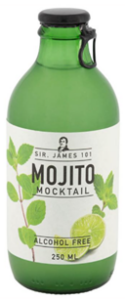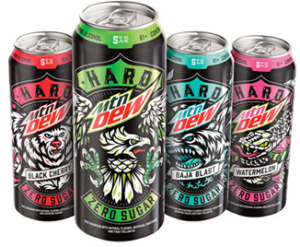

Readers might recall an earlier article (see here) discussing the positions of the General Court (GC) and the EUIPO’s Boards of Appeal (BoA) regarding (dis)similarity between alcoholic and non-alcoholic beverages. By way of a short recap, based on the rather surprising GC judgment in the FLÜGEL case (T‑150/17, 4 October 2018), the EUIPO swung around 180° from similarity to dissimilarity and even adapted its Guidelines. This new position was reinforced by the ICEBERG decision of the Grand BoA (R 1720/2017‑G, 21 January 2019). That said, during the two years following the FLÜGEL judgment, the BoA found non-alcoholic and alcoholic beverages to be similar (to a low degree) in 75% of the cases, including one case where waters and alcoholic beverages were held to be similar (R 2524/2018‑4, 20 January 2020).
However, the position continued to evolve. The GC overturned the decision of the BoA in the case just mentioned (T‑195/20, 22 September 2021). Moreover, between September 2020 and June 2022, the BoA again changed their course, now finding alcoholic and non-alcoholic beverages to be dissimilar in all their decisions, with a single exception, which involved alcoholic and non-alcoholic energy drinks; these were found to be similar (R 462/2020‑4, 23 February 2021).
Considering the above, it was surprising to see that the EUIPO Guidelines changed once again from claiming a fundamental dissimilarity between alcoholic and non-alcoholic beverages to a more balanced approach. While still stating that “most non-alcoholic drinks in Class 32 are considered to be dissimilar to most alcoholic drinks in Class 33”, they now also state that “some specific non-alcoholic drinks may be similar to some specific alcoholic drinks” such as non-alcoholic wine in class 32 and wine in class 33. The EUIPO has thus allowed room for a finding of similarity between other specific non-alcoholic and alcoholic beverages, on a case-by-case basis. Importantly, the cited example of similarity between specific alcoholic and non-alcoholic drinks leads to the general category of alcoholic and non-alcoholic beverages to be considered technically similar. This is in direct contradiction to the mentioned recent BoA practice.
Following the inconsistency of the BoA decisions and ever-changing practice of the EUIPO, the Grand BoA was again asked to decide on the comparison of alcoholic and non-alcoholic beverages, more specifically non-alcoholic beverages, flavoured carbonated beverages, waters, and vitamin enriched sparkling water in class 32, on the one hand, and wine, spirits and liquors in class 33, on the other (R 964/2020‑G, 13 April 2022, Zoraya). The Zoraya case attracted a lot of attention, including of the INTA which submitted an amicus brief. INTA argued that a rigid approach to (dis‑)similarity between class 32 and class 33 goods was not appropriate, referring to trends in the beverage industry that suggests a move towards more non- and low-alcohol beverages.
The Grand BoA, referring to INTA’s statements and the evidence presented by the opponent showing the existence of non-alcoholic versions of many alcoholic beverages on the Spanish market (such as beer, wine, cocktails, spirits, tinto de Verano, etc.), concluded that, for Spanish consumers, there was, at least, a low degree of similarity (i) between non-alcoholic beverages (that include also non-alcoholic wine and non-alcoholic spirits), vs. wine, liquors and spirits, and (ii) between non-alcoholic flavored carbonated beverages and wine. In contrast, the Grand BoA found dissimilarity between (i) waters and vitamin enriched sparkling water vs. wine, liquors and spirits (indicating that evidence submitted in favor of finding the similarity between these categories of beverages did not prove a general trend in the EU), and (ii) non-alcoholic flavored carbonated beverages vs. liquors and spirits (as these have not yet been compared with one another and no arguments in favor of finding a similarity were presented).
The Zoraya decision of the Grand BoA has reinforced the current EUIPO Guidelines in considering alcoholic and non-alcoholic beverages to be similar when comparing the category terms, but also allowing room for a finding of similarity between specific non-alcoholic and alcoholic beverages if a party is able to convincingly argue and substantiate the current situation or trend in the EU.
_____________________________
To make sure you do not miss out on regular updates from the Kluwer Trademark Blog, please subscribe here.


